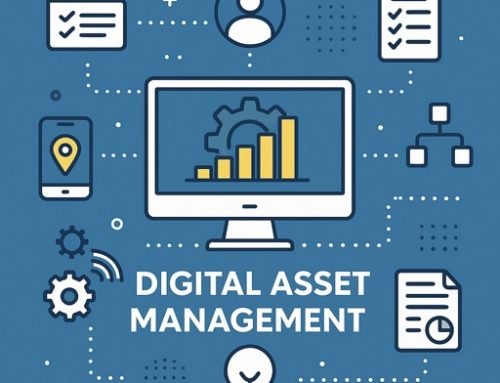Why are UK councils struggling? And what is the solution?
Dire news about the finances of UK councils seems to be a weekly theme in the press. The Local Government Association is forecasting an imminent £7.8 billion funding gap, with 50% of councils at risk of insolvency.
Why are councils losing so much money? And what can be done to turn things around – forget going cost-neutral, what about making a profit too?
Why exactly are UK councils struggling and going bankrupt?
Since 2010, central government have lost 27-40% of their funding. Austerity has gutted revenue and pushed councils into increasing council tax and business rates to make money.
But there is a problem – the money made from these measures ends up getting buried by inflation and other costs.
In the UK, council tax hikes cap at 4.99% for councils delivering social care (2.99% for councils who don’t). Councils such as Bradford, Maidenhead, Birmingham, and Trafford have permission to raise taxes further. Hampshire tried a substantial 15% rise, but this request was rejected.
Business rates favour busier areas like Westminster, who consistently generate tens of millions from parking. In comparison, council areas with lower footfall are actually losing money.
Meanwhile, statutory duties such as social care and child protection devour council budgets. Adult social care alone has jumped to £28.4 billion. Combine that with inflation and spiraling costs from bills and wages, and it’s no wonder that money generated from parking doesn’t go anywhere near meeting these shortfalls. COVID grants briefly kept cash reserves affloat (£30 billion in 2021), but these are draining fast.
In a desperate attempt to plug these gaps, some councils have gambled on doomed commercial ventures. Nottingham bet on Robin Hood energy and lost £38 million. Thurrock placed a bet on solar farms in a country infamous for its gloomy weather, and naturally lost £200 million.
Inefficiency compounds the mess
There are 300+ councils in the UK, with some areas split into fragmented two-tier systems. Residents submit all sorts of reports, applications and queries to local authorities every day. Some use modern digital systems; some use legacy technology; some services still use Excel spreadsheets or paper and pen! Some councils have devolved services, others do not. This naturally leads to a lot of duplicated effort, while outdated workflow processes drag productivity to a crawl. And all the while, the backlog just keeps growing.
You can point fingers and complain about mismanagement, but you have to admit that it’s very difficult to get anything done if you don’t have any money!
What are the potential paths to profit?
Councils can’t carry on like this – they need to generate revenue and savings. But how?
Maximise revenue and be smart about cutting costs
Raising council tax by 4.99% is a quick and easy way to generate revenue (at the expense of popularity). Optimising money raised through fees could help ease the burden as well (parking is a big money maker in London). Generating money through business rates seems limited to thriving areas (over 50% of Manchester City Council’s revenue comes from business rates).
Rather than going it alone and slashing budgets, merging services with neighbours could be beneficial. Outsourcing services is also an option. Leasing or selling non-essential assets could also net some extra cash; think unused vehicles, properties and land, for example.
Digital councils could also potentially monetise anonymised resident data. Estonia, for example, has advanced infrastructure and digital services allowing access to certain types of anonymised data for research. Sounds like a GDPR nightmare, but Estonia has strict data rules, incorporating the GDPR and their own Personal Data Protection Act.
Embrace digital transformation
You can save a bit of money here and there, but you can’t buy back time. Inefficiency is a killer, and this is where digital transformation can be a real game-changer. A lot of councils are limping on 20-30 year old technology with paper trails and slow systems. Nesta reporting from 2016 found that councils miss out on £14.7 billion a year by not going digital. Upfront costs for digital transformation can sting, but long-term gains (faster processes and fewer staff hours) free up cash for reinvestment.
Ashford Borough Council are a great example – as a rural borough, the authority lost a lot of time and money dealing with fly-tipping incidents (£90 per incident). After implementing our My Council Services system, Ashford now saves £80,000 per year by optimising their fly-tipping processes. This is just in one service area, so you can imagine how benefits quickly compound when digital transformation optimisation is applied across entire authorities.
Structural changes
Councils merging into super-entities sounds like the nuclear option. While there are concerns about council consolidation drowning out the voices of smaller communities, it’s becoming apparent that this will be the new normal moving forward. For example, Dorset County Council and several other authorities merged into Dorset Council in 2019, gaining £96 million in savings over four years.
Conclusion
UK councils aren’t losing money because they’re lazy. The system has been bleeding them dry for almost 20 years. Digital transformation, combined with mergers, devolution, and revenue generation and cost cutting measures, hints at a lifeline for councils. It’s not a full cure, but it’s a step from bankruptcy to building up again – they just need better tools to pull it off.
Regardless, success depends on more than how much you make and how much you keep. It requires a cultural shift within local authorities, where staff at all levels own their services and adopt new ways of working. Training and upskilling the workforce is just as important as deploying the latest software. With smart strategies, a clear focus, and a willingness to embrace change, councils can navigate financial challenges.





